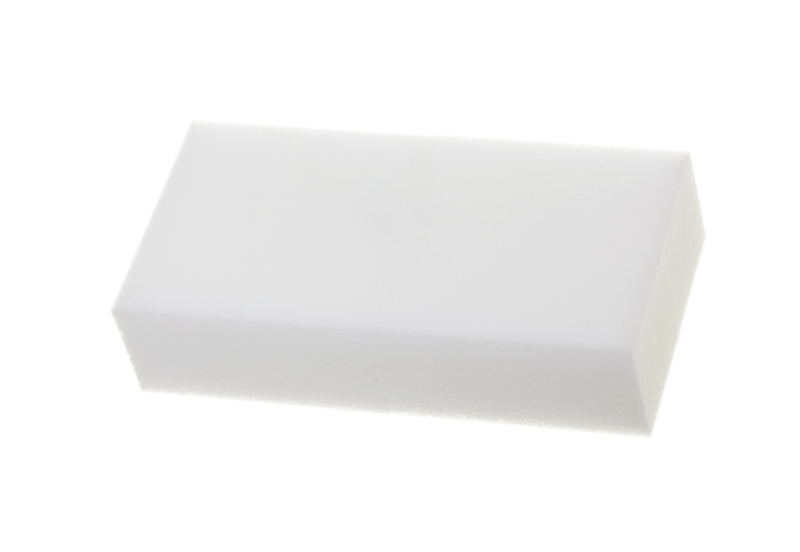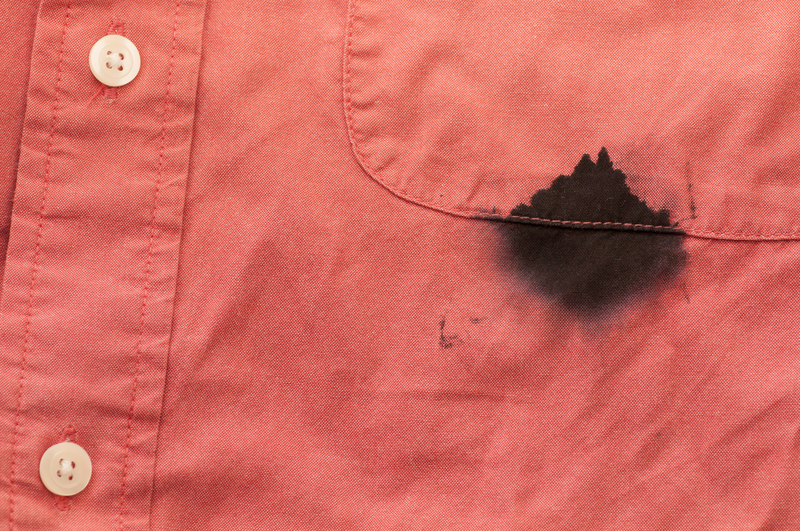Achieve a Pleasant Atmosphere by Removing Damp Odors
Posted on 08/09/2025
Achieve a Pleasant Atmosphere by Removing Damp Odors: Your Comprehensive Guide
If you've ever walked into a room and been greeted by a musty, unpleasant smell, you know how damp odors can negatively impact your living space. Removing damp odors is essential for both comfort and health. Whether it's in your home, office, or basement, dampness can create a breeding ground for mold and mildew, which in turn produce those stubborn odors. In this elaborate guide, you'll discover effective strategies to not only eliminate but also prevent damp smells, allowing you to maintain a fresh and inviting atmosphere in any environment.

Understanding the Causes of Damp Odors
To efficiently remove damp odors and maintain a pleasant environment, you first need to understand what causes these persistent smells. Recognizing the source is the first step in effective odor removal.
- Excess Moisture: The most common culprit, often resulting from leaks, high humidity, or insufficient ventilation.
- Mold and Mildew: These fungi thrive in moist areas, emitting distinctive musty smells.
- Poor Air Circulation: When air does not circulate well, moisture can accumulate, creating the perfect conditions for damp odors.
- Water Intrusion: Floods, leaking pipes, or faulty roofing can all introduce water into indoor spaces, triggering moisture issues.
- Absorbent Materials: Items like carpets, clothing, upholstery, and books can hold onto moisture and prolong unpleasant smells.
How Damp Odors Affect Your Well-Being
Beyond just being unpleasant, damp odors often point to underlying problems that can impact your health and property. Persistent dampness invites mold growth, which has been linked to respiratory issues, allergies, and skin irritations. Prolonged exposure can damage building structures, wallpaper, furniture, and personal belongings.
- Allergies and Asthma: Mold spores released into the air can cause or exacerbate these issues.
- Structural Damage: Long-term dampness weakens wood, plaster, and even concrete.
- Decreased Comfort: A musty home feels less welcoming and comfortable.
- Lower Property Value: Persistent unpleasant smells can make it more challenging to sell or rent your property.
Step-by-Step Solutions to Remove Damp Smells
Tackling musty odors requires a systematic approach. Here's how you can effectively remove damp smells and prevent them from returning.
1. Identify and Address the Source
- Inspect for Leaks: Check walls, ceilings, under sinks, around windows, and in basements for signs of water intrusion or leaks.
- Fix Plumbing Issues: Repair leaking pipes, toilets, or faulty appliances immediately.
- Evaluate Roof and Gutters: Ensure that rainwater is properly directed away from your home to avoid seepage.
Addressing the root cause is vital--simply masking the smell will not provide long-term relief.
2. Enhance Ventilation
- Open Windows: Regularly let in fresh air to improve circulation and reduce humidity.
- Use Exhaust Fans: Install or use existing fans in kitchens, bathrooms, and laundry rooms to expel moist air.
- Encourage Airflow: Rearrange furniture to facilitate better movement of air and avoid blocking vents.
3. Dry Out Affected Areas
- Utilize Dehumidifiers: These machines extract moisture from the air, helping to combat dampness effectively.
- Run Air Conditioners: AC units also dehumidify as they cool the air.
- Absorb Moisture: Place moisture-absorbing products like silica gel, baking soda, or activated charcoal in affected areas.
In areas such as basements and crawl spaces, controlling humidity is key to eliminating damp odors permanently.
4. Clean and Disinfect Thoroughly
- Mold Removal: Use a mixture of water and vinegar, hydrogen peroxide, or specialized mold sprays to treat moldy surfaces.
- Laundry: Wash linens, curtains, and clothing with vinegar or baking soda to neutralize stuck-on odors.
- Carpet Cleaning: Deep clean carpets with steam or professional cleaning services to remove embedded smells.
- Wipe Down Surfaces: Non-porous surfaces can often hold onto dampness; regularly clean walls, floors, and furniture.
5. Replace or Dry Absorbent Materials
- Discard Unsalvageable Items: Severely affected fabrics, books, or furniture may need replacement.
- Sun Dry Whenever Possible: Place affected items in direct sunlight--the UV rays help kill mold spores and dry fabrics thoroughly.
- Use Fans: Speed up the drying process with box or ceiling fans directed at damp areas.
6. Neutralize Remaining Odors
- Baking Soda: Sprinkle on carpets or upholstery; leave for a few hours before vacuuming to remove lingering damp odors.
- White Vinegar: Set out bowls of vinegar in musty rooms to absorb odors over time.
- Activated Charcoal: Known for its absorbency, it is highly effective for odor removal.
- Commercial Odor Absorbers: Look for products specifically designed to neutralize musty smells.
Preventing Damp Odors: Proactive Tips
Prevention is always better than cure. Once you've removed damp odors, take these steps to keep them at bay and enjoy a consistently pleasant atmosphere:
- Monitor Humidity Levels: Keep indoor humidity below 60% using dehumidifiers and air conditioning.
- Waterproof Basements and Crawl Spaces: Seal floors and walls to prevent moisture intrusion.
- Regular Maintenance: Routinely inspect roofing, plumbing, and windows for early signs of leaks.
- Store Items Properly: Store clothing, paperwork, and textiles in airtight containers, especially in humid climates.
- Use Mold-Resistant Products: Opt for paints and building materials that resist mold growth, particularly in moisture-prone areas.
- Avoid Overwatering Plants: Excessive moisture from houseplants can contribute to overall room dampness.
Natural and DIY Remedies for Damp Odors
Harnessing the Power of Nature
- Essential Oils: Scented oils like lavender, tea tree, and eucalyptus have both pleasurable aromas and mild antifungal properties.
- Citrus Peels: Dried lemon or orange peels absorb odors and introduce a fresh scent.
- Air Purifying Plants: Some houseplants (such as spider plant, snake plant, and peace lily) help remove toxins and moisture from the air naturally.
*While natural remedies can help with mild damp odors, always address the source of moisture first for best results.*
Homemade Cleaning Solutions
- Vinegar Spray: Mix equal parts water and white vinegar; spray onto affected surfaces and let air dry.
- Baking Soda Paste: Combine baking soda with a small amount of water to form a paste. Use it to scrub moldy or musty surfaces.
- Borax Solution: Borax is a natural mold inhibitor; mix with water for cleaning hard-to-treat spots.
The Importance of Regular Inspection
Routine inspection is crucial to maintain a fresh indoor atmosphere. Set reminders to check basements, attics, bathrooms, and kitchens periodically for early signs of moisture buildup or musty odors. The sooner you address these issues, the easier and less expensive it will be to resolve them.
- Check for Hidden Leaks: Small drips under sinks and behind appliances can cause big problems over time.
- Test Humidity Levels: Inexpensive hygrometers can help you monitor indoor moisture.
- Inspect Ventilation: Make sure all vents are unblocked and performing optimally.
Professional Help for Persistent Damp Odors
If you've taken every step and musty odors still persist, it could indicate a deeper problem, such as hidden mold in walls or under floors, extensive water damage, or faulty insulation. In such cases, enlist the expertise of professionals:
- Mold Remediation Specialists: Certified experts use specialized tools and chemicals to detect and safely remove mold.
- Structural Engineers: For ongoing water damage, an engineer can assess and recommend solutions to prevent further deterioration.
- Professional Cleaners: Services offering deep cleaning and odor neutralization may reach areas that typical household cleaning can't.

Maintaining a Pleasant Atmosphere: A Long-Term Commitment
Achieving and retaining a fresh, welcoming atmosphere at home isn't a one-time effort. It involves ongoing vigilance, from prompt repairs and routine cleaning to employing natural deodorizing methods. Here are some long-term habits to help you enjoy a pristine indoor environment year-round:
- Regular Deep Cleaning: Set up a quarterly schedule to clean carpets, upholstery, and air ducts.
- Seasonal Checks: Look for condensation or signs of damp after heavy rain or snowfall.
- Rotate Stored Items: Periodically air out stored clothes, books, and linens.
- Invest in Quality Air Purifiers: High-efficiency particulate air (HEPA) filters reduce airborne particles, including mold spores and odors.
Conclusion: Enjoy the Benefits of a Fresh, Odor-Free Space
In summary, removing damp odors is more than just a matter of comfort--it's paramount for good health and longevity of your living space. By identifying sources of moisture, implementing thorough cleaning routines, utilizing both modern technology and natural alternatives, and staying proactive about prevention, you can achieve and maintain a truly pleasant indoor atmosphere.
Ready to reclaim your home from stubborn smells? Start applying these techniques today and relish in the comfort of a fresh, inviting environment for you and your loved ones.
Remember: Consistency is key. A clean, dry, and well-ventilated space is the ultimate secret to saying goodbye to damp odors for good!
```




